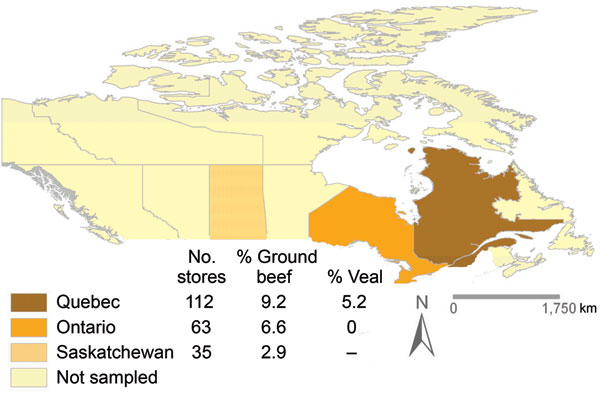Volume 15, Number 5—May 2009
Dispatch
Possible Seasonality of Clostridium difficile in Retail Meat, Canada
Figure 1

Figure 1. Distribution of retail grocery stores sampled (n = 210) and proportion with contaminated meat. The overall proportion of stores with >1 meat package contaminated with Clostridium difficile was 5.7%. No statistical differences were observed when comparing the proportions of ground beef contamination in Québec, Ontario, and Saskatchewan, Canada (p>0.2). No comparisons for veal chops were made because Québec was the main source of this commodity; veal from milk-fed calves was not available in Saskatchewan, and only 3 stores had this type of veal during sampling in Ontario.
Page created: December 16, 2010
Page updated: December 16, 2010
Page reviewed: December 16, 2010
The conclusions, findings, and opinions expressed by authors contributing to this journal do not necessarily reflect the official position of the U.S. Department of Health and Human Services, the Public Health Service, the Centers for Disease Control and Prevention, or the authors' affiliated institutions. Use of trade names is for identification only and does not imply endorsement by any of the groups named above.